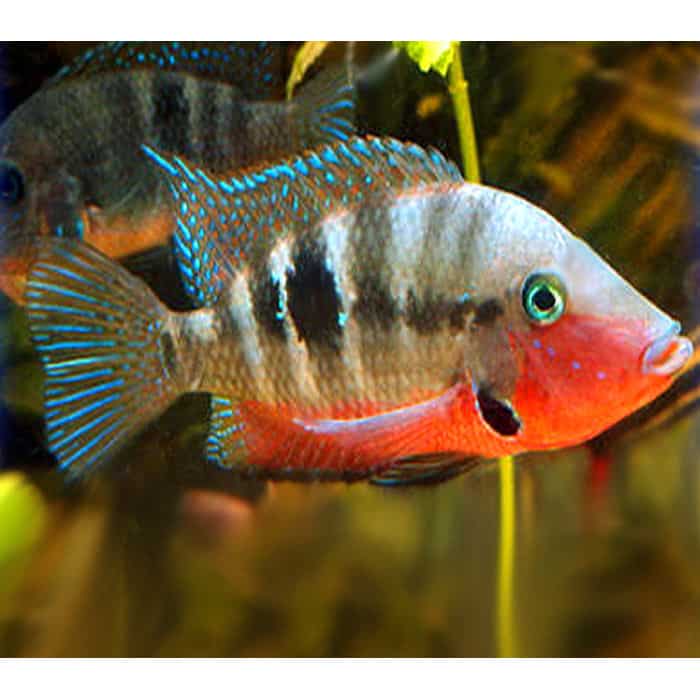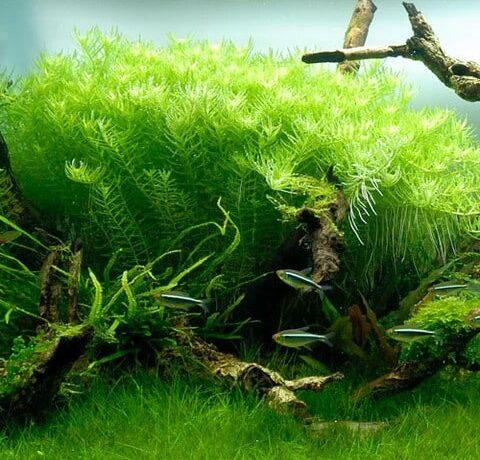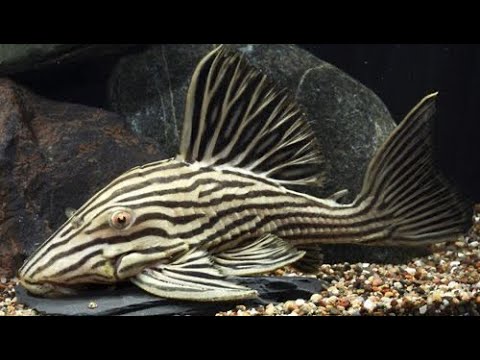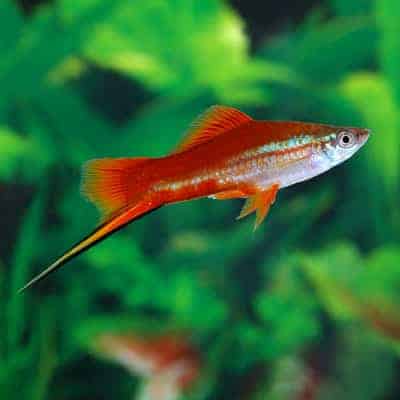Table of Contents
Introduction
The Firemouth is a popular aquarium fish due to their fiery red color and hardy nature. It is native to Central America and it is distributed in Río Tonalá system near Coatzacoalcos, on Mexico’s Atlantic slope, the states of Veracruz, Chiapas, Tabasco, the Yucatán Peninsula, Belize and northern Guatemala. It inhabits typically shallow, slow-moving rivers, lagoons, wetlands, ponds, canals, roadside ditches and streams over soft sediments with pH of 6.5-8.0 and water temperature of 70-75° F. They stay close to vegetation near the shore where they feed on algae along with some meaty foods within sandy or muddy bottoms.

” data-large-file=”https://redcherryshrimp.net/wp-content/uploads/2015/02/Thorichtys-Meeki-Firemouth-Cichlid-Information-Firemouth-Cichlid-for-sale-and-where-to-buy-AquaticMag-6.jpg” data-medium-file=”https://redcherryshrimp.net/wp-content/uploads/2015/02/Thorichtys-Meeki-Firemouth-Cichlid-Information-Firemouth-Cichlid-for-sale-and-where-to-buy-AquaticMag-6.jpg” data-orig-file=”https://redcherryshrimp.net/wp-content/uploads/2015/02/Thorichtys-Meeki-Firemouth-Cichlid-Information-Firemouth-Cichlid-for-sale-and-where-to-buy-AquaticMag-6.jpg” data-orig-size=”375,300″ data-original-height=”285″ data-original-width=”356″ data-recalc-dims=”1″ src=”https://i1.wp.com/redcherryshrimp.net/wp-content/uploads/2015/02/Thorichtys-Meeki-Firemouth-Cichlid-Information-Firemouth-Cichlid-for-sale-and-where-to-buy-AquaticMag-6.jpg?resize=356%2C285″ style=”width: 356px; height: 285px;” title=”Thorichtys Meeki Firemouth Cichlid Information Firemouth Cichlid for sale and where to buy – AquaticMag (6)”></p></div> <div class=)
” data-large-file=”https://redcherryshrimp.net/wp-content/uploads/2015/02/Thorichtys-Meeki-Firemouth-Cichlid-Information-Firemouth-Cichlid-for-sale-and-where-to-buy-AquaticMag-3.jpg” data-medium-file=”https://redcherryshrimp.net/wp-content/uploads/2015/02/Thorichtys-Meeki-Firemouth-Cichlid-Information-Firemouth-Cichlid-for-sale-and-where-to-buy-AquaticMag-3.jpg” data-orig-file=”https://redcherryshrimp.net/wp-content/uploads/2015/02/Thorichtys-Meeki-Firemouth-Cichlid-Information-Firemouth-Cichlid-for-sale-and-where-to-buy-AquaticMag-3.jpg” data-orig-size=”800,534″ data-original-height=”238″ data-original-width=”356″ data-recalc-dims=”1″ src=”https://i2.wp.com/redcherryshrimp.net/wp-content/uploads/2015/02/Thorichtys-Meeki-Firemouth-Cichlid-Information-Firemouth-Cichlid-for-sale-and-where-to-buy-AquaticMag-3.jpg?resize=356%2C238″ style=”width: 356px; height: 238px;” title=”Thorichtys Meeki Firemouth Cichlid Information Firemouth Cichlid for sale and where to buy – AquaticMag (3)”></p></div> </p></div> </p></div> <div class=)
” data-large-file=”https://redcherryshrimp.net/wp-content/uploads/2015/02/Thorichtys-Meeki-Firemouth-Cichlid-Information-Firemouth-Cichlid-for-sale-and-where-to-buy-AquaticMag-5.jpg” data-medium-file=”https://redcherryshrimp.net/wp-content/uploads/2015/02/Thorichtys-Meeki-Firemouth-Cichlid-Information-Firemouth-Cichlid-for-sale-and-where-to-buy-AquaticMag-5.jpg” data-orig-file=”https://redcherryshrimp.net/wp-content/uploads/2015/02/Thorichtys-Meeki-Firemouth-Cichlid-Information-Firemouth-Cichlid-for-sale-and-where-to-buy-AquaticMag-5.jpg” data-orig-size=”386,240″ data-original-height=”236″ data-original-width=”380″ data-recalc-dims=”1″ src=”https://i1.wp.com/redcherryshrimp.net/wp-content/uploads/2015/02/Thorichtys-Meeki-Firemouth-Cichlid-Information-Firemouth-Cichlid-for-sale-and-where-to-buy-AquaticMag-5.jpg?resize=380%2C236″ style=”width: 380px; height: 236px;” title=”Thorichtys Meeki Firemouth Cichlid Information Firemouth Cichlid for sale and where to buy – AquaticMag (5)”></p></div> </p></div> <div class=)
” data-large-file=”https://redcherryshrimp.net/wp-content/uploads/2015/02/Thorichtys-Meeki-Firemouth-Cichlid-Information-Firemouth-Cichlid-for-sale-and-where-to-buy-AquaticMag-7.jpg” data-medium-file=”https://redcherryshrimp.net/wp-content/uploads/2015/02/Thorichtys-Meeki-Firemouth-Cichlid-Information-Firemouth-Cichlid-for-sale-and-where-to-buy-AquaticMag-7.jpg” data-orig-file=”https://redcherryshrimp.net/wp-content/uploads/2015/02/Thorichtys-Meeki-Firemouth-Cichlid-Information-Firemouth-Cichlid-for-sale-and-where-to-buy-AquaticMag-7.jpg” data-orig-size=”300,221″ data-original-height=”236″ data-original-width=”321″ data-recalc-dims=”1″ src=”https://i0.wp.com/redcherryshrimp.net/wp-content/uploads/2015/02/Thorichtys-Meeki-Firemouth-Cichlid-Information-Firemouth-Cichlid-for-sale-and-where-to-buy-AquaticMag-7.jpg?resize=321%2C236″ style=”width: 321px; height: 236px;” title=”Thorichtys Meeki Firemouth Cichlid Information Firemouth Cichlid for sale and where to buy – AquaticMag (7)”></p></div> </p></div> <div class=)
” data-large-file=”https://redcherryshrimp.net/wp-content/uploads/2015/02/Thorichtys-Meeki-Firemouth-Cichlid-Information-Firemouth-Cichlid-for-sale-and-where-to-buy-AquaticMag-4.jpg” data-medium-file=”https://redcherryshrimp.net/wp-content/uploads/2015/02/Thorichtys-Meeki-Firemouth-Cichlid-Information-Firemouth-Cichlid-for-sale-and-where-to-buy-AquaticMag-4.jpg” data-orig-file=”https://redcherryshrimp.net/wp-content/uploads/2015/02/Thorichtys-Meeki-Firemouth-Cichlid-Information-Firemouth-Cichlid-for-sale-and-where-to-buy-AquaticMag-4.jpg” data-orig-size=”500,333″ data-original-height=”236″ data-original-width=”355″ data-recalc-dims=”1″ src=”https://i2.wp.com/redcherryshrimp.net/wp-content/uploads/2015/02/Thorichtys-Meeki-Firemouth-Cichlid-Information-Firemouth-Cichlid-for-sale-and-where-to-buy-AquaticMag-4.jpg?resize=355%2C236″ style=”width: 355px; height: 236px;” title=”Thorichtys Meeki Firemouth Cichlid Information Firemouth Cichlid for sale and where to buy – AquaticMag (4)”></p></div> </p></div> </p></div> </p></div> </p></div> </p></div> </p></div> </p></div> <div class=)
Firemouth Cichlid’s Overview
The Firemouth Cichlid is a great fish for both beginner and advanced fish keepers. It has strongly compressed laterally body with a sloping forehead and sharply pointed mouth. The throat and breast are red in color which ranges from a brick shade to a fiery red. The body is bluish gray in color with a slight purple sheen. The under area is yellow green to orange in color while the sides have a series of faint dark bars. A golden edged black spot is present just behind the eyes and at the start of the caudal fin. Other black marks with golden edges are also seen on the lower edge of the gill cover and at the start of the pectoral fins. Caudal fin is truncated or lunate type with very long outer rays while the pectoral fin is long and pointed. The dorsal fin is edged with red color while the pelvic and anal fins are edged with black color. All the scales are edged with red color. The Firemouth Cichlid is a benthic omnivorous fish and in wild condition it mainly eats detritus, mollusks, copepods, cladocerans, insects, algae and plants. Males are generally larger than females of the same age with brighter and redder coloration around the throat. The male also have more pointed dorsal fin, anal fin and genital papilla. The females are less brightly colored than the males and have a blunt genital papilla. It grows up to 15 cm in length and can live up to 10 years or more.
Scientific Name: Thorichthys meeki
Common Name: Firemouth Cichlid, Fire Mouth
Origin: South Mexico to Guatemala
Adult Size: 15 cm
Behavior: Semi-aggressive
Tank Level: All but prefers middle to bottom
Minimum Tank Size: 30 gallons
Diet: Omnivore
Breeding: Egg layers
Care level: Moderate
Water pH: 6.5-8.0
Water Hardness: 8 – 15 0 dGH
Water Temperature: 70-750 F
Water Movement: Moderate
Lighting: Moderate – normal lighting
Lifespan: 10 years or more
Background of Firemouth cichlid
The firemouth is a classic cichlid which is very popular amongst aquarium fish keepers. It was first described by Brind in 1918. It belongs to the family Cichlidae under order Perciformes of class Actinopterygii. The most noticeable characteristics of this fish are its throat and breast area coloration, which ranges from bright fiery red to brick red and it, gives the common name ‘firemouth’. The meaning of the genus Thorichthys is defined by Meek as a leaping fish and the species name meeki was given to the honor of American Icthyologist Professor Seth Eugene Meek. At present this species is not listed on the IUCN Red List.
Firemouth cichlid & Housing
The Firemouth Cichlid is one of the most popular cichlid due to its vibrant red coloration. It requires a tank of a minimum of 30 gallons with a fine sand bottom for burrowing and plenty of open swimming room. The tank should also have available rocks, leaves or submerged wood to hide among the rocks and roots. It is a great choice for the beginner cichlid keepers due to their adaptability to a wide variety of environments. They require good water movement along with strong and efficient filtration. The aquarium water should have good water quality with a pH of 6.5-8.0 and hardness of 8 – 15 0 dGH. The Firemouth Cichlid is peaceful fish and it should be kept with similar tank mates and temperament. Suggested tank mates include Cichlasomines, other South American cichlids, Loricarids, Pimelodids, large Characins, Hemichromis, Tilapia etc. At least 15% water changes should be done each week to make the aquarium environment healthy.
Recommended Plants
Check out recommended plants for Firemouth Cichlid
Feeding Firemouth cichlid
The Firemouth Cichlid is a benthic omnivorous fish and in wild condition it mainly eats detritus, mollusks, copepods, cladocerans, insects, algae and plants. In captive condition it takes wide variety of flake, fresh and live foods. It also takes prepared and frozen foods such as freeze-dried bloodworms, Tubifex, brine shrimp and plankton. Besides these, vegetables such as blanched spinach and cucumber should also be offered regularly. To maintain the good health of fish a certain amount of natural food in the diet is still needed. Feed should be supplied 2-3 times a day.
Firemouth cichlid’s Breeding
The Firemouth Cichlid is egg layers and regularly breeds in captive condition. It becomes territorial, especially during spawning. During breeding period, the tank water should be maintained with a pH of 6.5-8.0, hardness of 8 – 15 0 dGH and the temperatures should be between 70 and750 F. The female lays 100-500 eggs on cleaned rocks. The female fans the eggs while the male guards the territory. The eggs hatch in 3-4 days and the fry becomes free swimming in about a week. The fry should be fed with newly hatched brine shrimp and finely crushed flakes.
Sexing Firemouth cichlid
It is easy to make differences between male and female. Males are generally larger than females of the same age with brighter and redder coloration around the throat. The male also have more pointed dorsal fin, anal fin and genital papilla. The females are less brightly colored than the males and have a blunt genital papilla.
Firemouth cichlid for sale and where to buy
The Firemouth is a very beautiful fish with lots of personality. It is readily available both online and in fish stores with moderate price. Look below online vendor and you may order it to buy from this online shop that I would recommend from.




No Comments